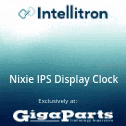SCAMP, Win Link, and Black Helos?
Discussion in 'Amateur Radio News' started by KY5U, Dec 11, 2004.
- Thread Status:
- Not open for further replies.
Page 12 of 16
Page 12 of 16
- Thread Status:
- Not open for further replies.










